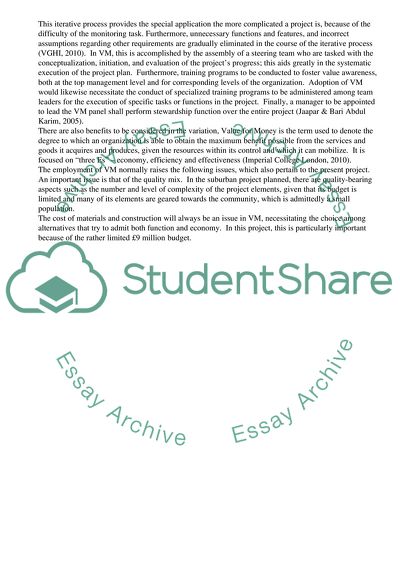Cite this document
(Value Management and Value Engineering Essay Example | Topics and Well Written Essays - 3500 words, n.d.)
Value Management and Value Engineering Essay Example | Topics and Well Written Essays - 3500 words. Retrieved from https://studentshare.org/management/1743271-value-and-risk-managemet
Value Management and Value Engineering Essay Example | Topics and Well Written Essays - 3500 words. Retrieved from https://studentshare.org/management/1743271-value-and-risk-managemet
(Value Management and Value Engineering Essay Example | Topics and Well Written Essays - 3500 Words)
Value Management and Value Engineering Essay Example | Topics and Well Written Essays - 3500 Words. https://studentshare.org/management/1743271-value-and-risk-managemet.
Value Management and Value Engineering Essay Example | Topics and Well Written Essays - 3500 Words. https://studentshare.org/management/1743271-value-and-risk-managemet.
“Value Management and Value Engineering Essay Example | Topics and Well Written Essays - 3500 Words”, n.d. https://studentshare.org/management/1743271-value-and-risk-managemet.


